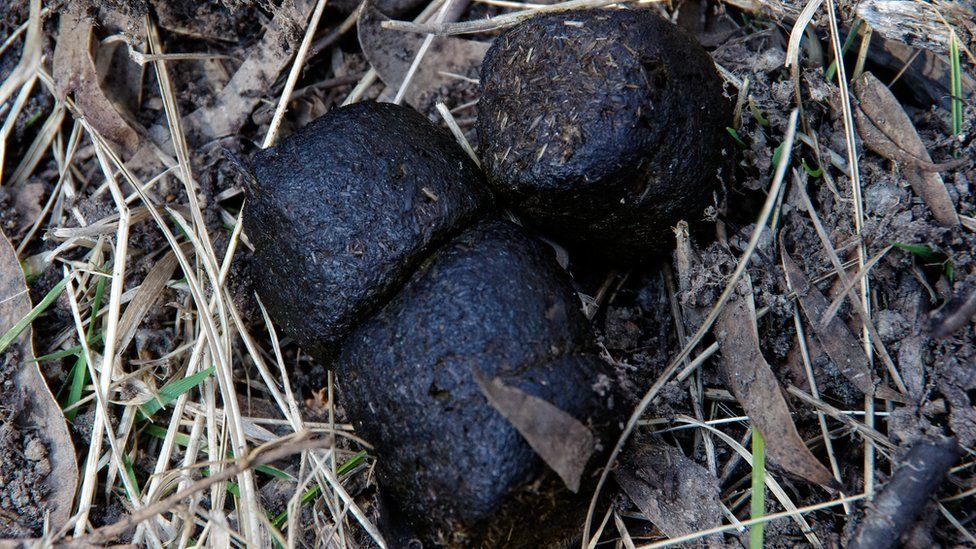Why wombats have CUBE-SHAPED poo!
- Published
- comments

Ever seen poo like this before?!
Did you know that cute, furry wombats are the only animal in the world to poo cubes!?
Yep... you read it right...CUBE-SHAPED POO!
And now, scientists have finally uncovered the mystery of why and how.
It might be stinky, but this is the kind of important research that Newsround LOVES!
How do wombats poo cubes?
Who would have thought that this adorable little creature could create such unique poo!
Wombats weigh up to 35 kilograms and live in grassy plains and forests in Australia.
They create nearly 100 poo cubes every day! But how?!
There were suggestions that wombats had a square-shaped anus or even that the animals pat the poo into shape afterwards - a theory that Dr Scott Carver, wildlife ecologist at the University of Tasmania and one of the authors of the new research paper, called "complete nonsense".
To find out what was really going on, in 2018, scientists studied the intestines of a wombat that had died and found two grooves where the guts are more elastic.
Researchers then did another study looking at two more wombats and tested the guts' layers of muscle and tissue. They discovered that the intestines had different areas of thickness and stiffness.
Next, they modelled how the wombats intestines expand and contract when food is being digested. This showed how sections of the intestinal muscles contract over several days which squeezes the poop into its unique shape!
"The rhythmical contractions help form the sharp corners of the cubes," Carver said.
Their study proved how the cube shape is formed within the intestines, rather than at the point of exit as once thought.
Why do wombats poo cubes?
Ok, so we bet you've all been asking the golden question 'WHY the square poo?!' Don't worry, we've got answers...
David Hu, a biomechanics researcher at the Georgia Institute of Technology and author of the recent study, has offered up one theory.
He thinks that because wombats climb up rocks and logs to mark their territory, cube-shaped poo has less chance of rolling away. Pretty clever!
The discovery could help people too.
Engineers may be able to come up with new ways of manufacturing cubes inside a soft tube - which could benefit research in human digestive health.
- Published4 January 2021
- Published16 September 2019
- Published23 October 2019
